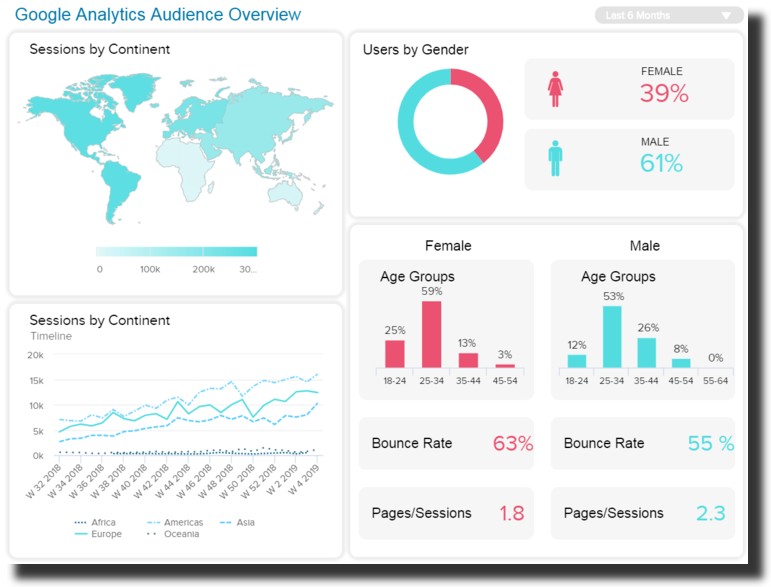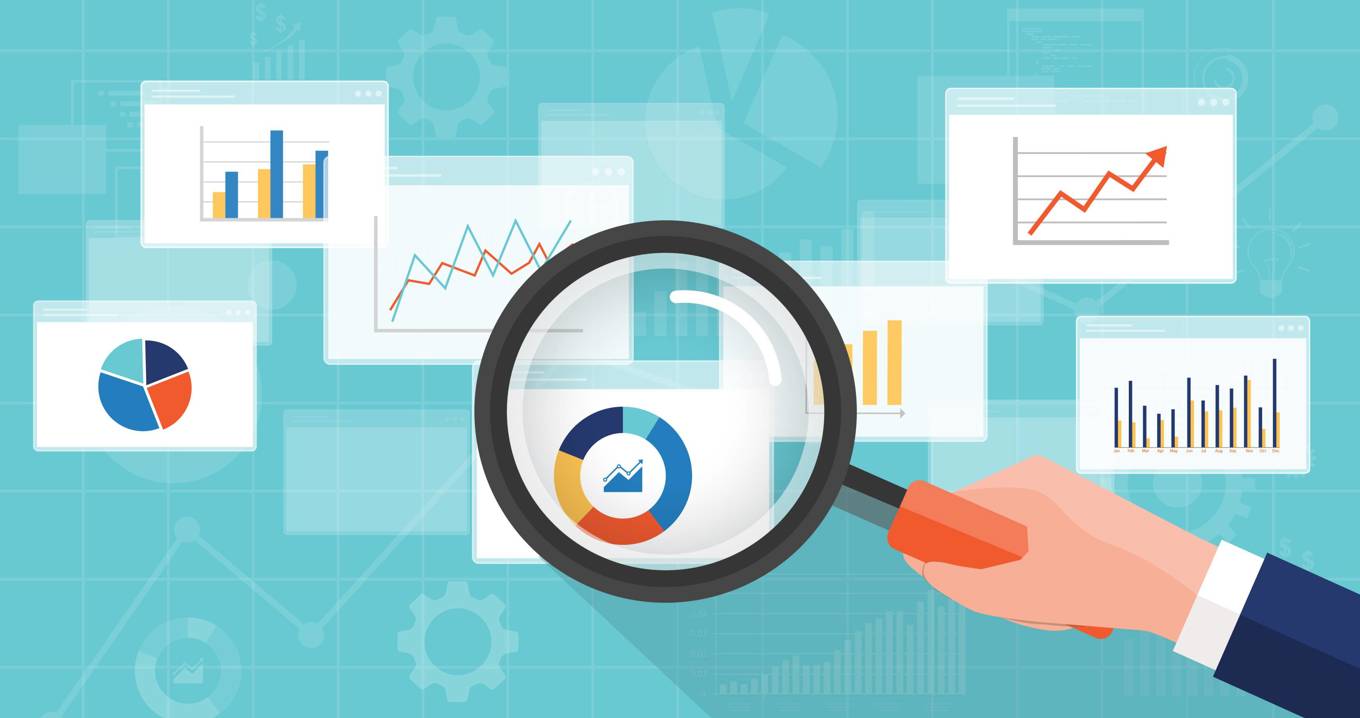Optimize Service Processes Using In-depth Analytics Reports
Optimize Service Processes Using In-depth Analytics Reports
Blog Article
Increase Efficiency and Success Through Data Analytics
In today's data-driven landscape, organizations are significantly recognizing the pivotal function of data analytics in improving operational performance and success. By methodically examining information, companies can uncover essential insights that educate strategic decisions, improve procedures, and tailor consumer experiences.
Recognizing Information Analytics
In today's data-driven landscape, understanding information analytics is vital for companies intending to boost functional efficiency and drive productivity. Information analytics includes the systematic computational analysis of information sets to reveal patterns, relationships, and insights that educate decision-making. By using numerous methods, such as analytical evaluation, machine knowing, and predictive modeling, organizations can transform raw information into actionable knowledge.
The procedure commonly starts with data collection, where appropriate information is gathered from several resources, including transactional data sources, customer interactions, and market trends. This information is after that cleaned up and organized to ensure precision and consistency. When the data is prepared, logical devices and software application are made use of to picture the details and explore, allowing stakeholders to determine abnormalities and trends.
Inevitably, understanding information analytics equips companies to make informed decisions based on empirical proof as opposed to intuition. It facilitates targeted methods that can maximize source allotment, enhance customer satisfaction, and boost general performance. As organizations increasingly identify the value of data-driven understandings, a strong grasp of information analytics comes to be a crucial proficiency for leaders and teams alike, placing them for sustained success in a competitive environment.

Secret Advantages for Businesses
Businesses that utilize information analytics can unlock a plethora of advantages that dramatically enhance their operations and earnings. Among the main advantages is boosted decision-making. Information analytics gives actionable insights stemmed from real-time data, allowing companies to make enlightened options that line up with market needs and customer preferences.

Furthermore, data analytics promotes enhanced client experiences. By comprehending customer behaviors and preferences, businesses can tailor their offerings, resulting in raised satisfaction and commitment. This personalized method usually leads to higher conversion prices and repeat business.
Moreover, data analytics enables services to determine arising chances and fads. By remaining in advance of the curve, organizations can take advantage of new markets and innovations prior to their rivals.
Executing Data-Driven Methods
Successful implementation of data-driven strategies calls for a detailed understanding of both organizational objectives and offered data sources. Organizations has to initially define their purposes clearly, ensuring placement between data campaigns and calculated aims. This quality allows groups to concentrate on relevant metrics and understandings that drive decision-making.
Top quality information is important for precise evaluation, as poor data can lead to misdirected strategies and squandered sources - Analytics. Organizations has to establish procedures for information collection, cleansing, and management to preserve data stability.
Furthermore, fostering a data-driven culture is critical. Employees whatsoever degrees need to be urged to leverage data in their everyday operations. Training workshops and programs can boost information proficiency, empowering staff to make informed decisions based on analytical insights.
Tools and Technologies Summary
A robust suite of devices and modern technologies is crucial for organizations aiming to harness the full potential of information analytics. These devices promote the collection, handling, and visualization of information, allowing services to obtain actionable insights.
At the foundational degree, information administration systems such as SQL databases and NoSQL systems offer efficient data storage space and access capacities. For data processing and evaluation, right here shows languages like Python and R, along with structures such as Apache Glow, allow complicated calculations and device learning applications.
Visualization devices, consisting of Tableau and Power BI, transform raw information right into user-friendly graphical layouts, making insights available to stakeholders whatsoever degrees. Furthermore, cloud-based platforms like Google Cloud and AWS offer scalable storage space and processing solutions, suiting the growing quantities of information organizations run into.
For advanced analytics, predictive modeling and AI-driven solutions are increasingly taken on, enabling companies to anticipate trends and enhance decision-making processes. Incorporating these tools right into existing workflows is extremely important; organizations that successfully take advantage of this technology can dramatically improve functional efficiency and drive profitability. Hence, spending in the right tools and modern technologies is a calculated necessary for any kind of data-driven company.
Situation Research Studies of Success
Leveraging data analytics has actually led various companies to achieve remarkable enhancements in performance and profitability. One noteworthy situation is a huge retail chain that implemented predictive analytics to maximize inventory management. By evaluating historic sales information and client fads, the firm reduced excess inventory by 30%, leading to considerable cost savings and improved cash circulation.
Another example can be found in the manufacturing industry, where a leading vehicle maker made use of information analytics to improve its manufacturing processes. By checking equipment efficiency in real-time, the organization determined ineffectiveness and bottlenecks, resulting in a 20% rise in total tools effectiveness (OEE) This not only boosted manufacturing rates however also minimized downtime and upkeep prices.

These situation studies highlight just how data analytics can drive strategic decision-making, enhance processes, and eventually enhance both performance and success throughout various fields.
Conclusion
Finally, the combination of information analytics into company procedures presents considerable possibilities for improving performance and profitability. By systematically assessing data, Learn More Here organizations can identify ineffectiveness, maximize consumer experiences, and make informed decisions. The fostering of anticipating modeling and real-time monitoring even more makes it possible for businesses to stay ahead of arising fads and allot resources successfully. Inevitably, the strategic application of data-driven methods cultivates continual competitive advantages and drives significant improvements in operational performance and financial outcomes.
In today's data-driven landscape, comprehending data analytics is necessary for organizations aiming to improve operational performance and drive success. Information analytics includes the systematic computational evaluation of information sets to reveal patterns, relationships, and insights that inform decision-making. Data analytics supplies workable understandings obtained from real-time data, allowing businesses to make educated choices that line up with market demands and consumer preferences.
Top notch data is essential for precise evaluation, as bad information can lead to misguided approaches and lost sources. Organizations has to develop processes for data collection, cleansing, and monitoring to maintain data here stability.
Report this page